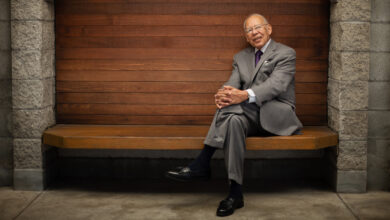Pro-Life Policy in a Post-Roe World

For 50 years, the overturning of Roe v. Wade (1973) was a focal point for many abortion opponents. That goal was accomplished in 2022 when the Supreme Court’s Dobbs v. Jackson Women’s Health Organization decision returned abortion law to the states.
Chaos and confusion have followed the end of Roe as much as victory and celebration. Pro-lifers like me had been marching for life and calling for the overturn of Roe for so long. The movement was hardly prepared for what would happen next—what is now happening—in 50 different states with 50 different political contexts; legal histories; levels of medical preparedness, access, and expertise; and overall dispositions toward the needs of women and unborn children.
The reality of a post-Dobbs world is that there is no longer one big political goal. There are 50 or 500 or 5,000 smaller goals. Pro-lifers face unprecedented opportunities to promote a whole-life, pro-life ethic through a variety of policies—medical, financial, social, and educational—that will encourage those making decisions around abortion to choose life and help communities support those lives.
Creating a more pro-life America post-Roe will require work on many, many fronts, particularly since the percentage of people who find abortion morally acceptable recently increased, and abortions are actually on the rise. Changing hearts and minds is the most important work. But changing laws can help too.
States now have the opportunity to pass their own abortion-related legislation. This patchwork approach makes it imperative that legislators developing laws to protect unborn children and their mothers are well-informed. They must seek out the expertise of health care providers, agency heads, and others whose knowledge and experience can ensure sound, compassionate, holistic policies.
A “shoot first, ask questions later” approach to abortion law unmoored from the best-available medical practices and technology does not uphold a pro-life ethic, and pro-life legislation must be more than mere posturing when the lives of both mother and child are at stake. The stakes are too high to experiment with exciting but ultimately impractical—or dangerous—legislation that puts lives at unnecessary risk.
Beyond medical law, financial policies can determine life-and-death decisions around abortion. Indeed, three in four abortions take place among low-income families, and women who choose abortion consistently cite financial limitations as a major reason for their choice. This month, a diverse group of pro-life leaders—including Kristan Hawkins of Students for Life of America, Roland C. Warren of Care Net, Kathryn Jean Lopez from the National Review Institute, and Leah Libresco Sargeant of Other Feminisms—asked Congress to expand the child tax credit in light of the Dobbs ruling.
“We understand,” they wrote in a letter sent to congressional leaders on January 10, “that the work of upholding the sanctity and dignity of life is far from over.” Pointing to long-standing bipartisan agreement around expanding this tax credit, the letter argues that such a shift is a simple, politically viable way to decrease the abortion rate. “Many mothers face significant health and financial challenges throughout pregnancy and into the early years of raising a child,” it says. “We can, and should, do more as a nation to provide for their needs.”
This kind of proposal is not only right; it’s also prudent. “In a post-Roe landscape,” as Patrick Brown of the Ethics and Public Policy Center argued last year, “it is essential that abortion opponents stand up in favor of the health and wellbeing of mothers and the babies they carry—for political reasons, in addition to moral ones.” Brown proposed a federal provision that would extend postnatal Medicaid coverage from 60 days to one year, ensuring all babies would have medical coverage throughout infancy.
Many pro-life leaders and organizations are coalescing around similarly practical projects in municipal, state, and federal policy. These efforts, which can bolster both social and financial support networks that effect abortion-related decisions, include:
- Increasing resources for childcare, ensuring that faith-based childcare providers would be included in these expanded programs, and including resources for in-home care by parents or relatives
- Meeting health care needs for pregnant mothers, new parents, and children through existing programs, including community health care centers and pregnancy resource centers
- Supporting adoption and adoptive parents, including expansion of the adoption tax credit, along with strengthening the foster care system through expanded partnerships that assist both foster and biological families
- Creating a national online resource to offer information to pregnant and new mothers and to connect them to existing federal, state, and local resources
- Strengthening connections and collaborations between governmental resources and programs and faith-based resources and programs that serve pregnant women, children, and families
Some of these projects are already in action. For example, Mississippi Attorney General Lynn Fitch launched a website, Mississippi Access to Maternal Assistance (MAMA), which directs women and families to both public and private resources in their state. “Whether you’re a mother-to-be or a mother of three, MAMA can quickly connect you to health care services, infant essentials, clothing, food, shelter, financial assistance, child care, jobs, education, legal aid, adoption services and more,” the site reads. “Remember, Mama, you can do this!”
A website seems, perhaps, so simple—perhaps even unimaginative. But its link to resources can be a bridge between life and death, or at least a steppingstone to a higher quality of life. There will be many such small steps toward our smaller goals in the post-Roe era. The ways to help pregnant women in need are only as limited as our imaginations. And after pregnancy, care is needed into the “fourth trimester,” because the most urgent needs of a new mother and new child continue into the weeks immediately following birth.
At the federal level, one possible route is the Providing for Life Act, which Iowa Rep. Ashley Hinson introduced last year. The bill “charts the policy course for a culture of life in America,” Hinson said, by expanding the child tax credit, providing tax breaks to working families, enhancing paid parental leave, establishing a federal clearing-house of resources available to pregnant mothers, expanding WIC eligibility for postpartum women, and enacting multi-tiered child support reform, among other policy reforms. Florida Sen. Marco Rubio published a memo with similar ideas on this month’s anniversary of Roe.
Life-affirming polices at the local scale also go well beyond abortion law. For example, where I live, one hospital recently announced it will temporarily suspend obstetric services because of a national ob-gyn shortage. Expectant mothers who would normally deliver their babies at this facility will now have to travel to a neighboring hospital.
This shortage of ob-gyns is an ongoing problem—not a result of the Dobbs decision, but the consequence of a number of factors developing over the past decade. Now, some expectant and new mothers are going without the basic health services needed for labor, delivery, and postpartum care. Addressing the causes of this shortage is just one task in a breathtaking range of work we need to do to create a more pro-life world, and Christian universities with medical schools should seize this opportunity to proactively train and credential the next generation of ob-gyns.
In all this work, remember: The baby whose life we save in the womb is also a baby who deserves to be delivered safely and lovingly into the world, and that has never been reducible to outlawing abortion or overturning Roe.
Now Roe is dead. But there is much more we can and must do to make sure babies live.
Karen Swallow Prior, author of The Evangelical Imagination: How Stories, Images, and Metaphors Created a Culture in Crisis, is a columnist at Religion News Service and writes regularly on Substack at The Priory.




